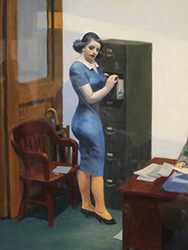 |
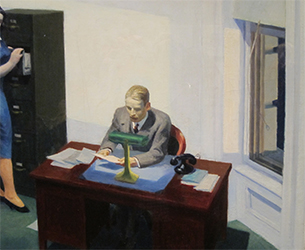 |
 |
 |
Culture can be defined as those social practices whose prime aim is signification , i.e. the production of sense or making orders of 'sense' for the world we live in. Culture is the social level in which are produced those images of the world and definitions of reality which can be ideologically mobilized to legitimize the existing order of relations of domination and subordination between classes, races, and sexes.---Griselda Pollock, Vision and Difference, p. 20.
The way any image "looks" is in part governed by the conventions of representation that operate at a given historical moment. Conventions briefly put, are ways of doing things that have gained certain social sanction --for example, the social convention of eating with utensils.... If conventions, pictorial or otherwise, are simply the way people do things, they are neither innocent nor historically accidental, either in the common practice of daily life (for example, the conventions of table etiquette) or in art. Conventions are a means by which to make and keep social order; they function to regularize and regulate. Yet the effectiveness of conventions to some extent lies in the degree to which they manifest themselves as being "natural," thus seeming "universal" and not imposed or serving only certain social or cultural interests. And the greater the extent to which social practices have been naturalized, the more they are explicit responses to social pressure and specific definitions of culture. In other words, conventions are operative principles of order, just as order is the expression of power. In a social context, conventions are rendered-unconscious expressions of ideology. Richard Leppert, Art and the Committed Eye, pp. 8-9.
Assignment for Tuesday, January 21:
I would like to begin our discussion with an examination of Edward Hopper's Office at Night (1940). At first sight, Hopper's painting has the effect of a transparent glimpse of modern urban life. He has been fully trained in the western mimetic tradition where the artist imitates what we see, but there are no neutral representations. Systems of representation are constructed in particular social / cultural contexts. Rather than reflecting an existing reality, systems of representation "organize, construct, and mediate our understanding of reality, emotion, and imagination." To help you further grasp the idea of representation as used in contemporary critical theory review the quotations I have compiled on the web page entitled "Representation."
The French theorist Roland Barthes makes the distinction between "denotative" and "connotative" meanings of images. The "denotative" meaning can be understood as a literal, descriptive meaning. In your journals make a detailed listing of the details included in the Hopper painting. This can be understood as a list of the objects included in the painting. Be as specific as possible.
The "connotative" level of understanding refers to the cultural and historical meanings the elements included in the "denotative" reading take on. As an example to understand this distinction, on the denotative level we can only identify the woman in the image as a woman, but from our understanding of the nature of office work, we can understand her role as a secretary. In examining the image, we need to be careful to not impose our cultural assumptions into this reading. For example, consider how the social meaning of the secretary has changed dramatically from the time when this painting was created to our own time largely as a result of social and cultural changes like the development of feminism. Try your hand at exploring the "connotative" meanings of the details you recorded in your "denotative" listing. Include your responses in your journal.
Thursday, January 23:
Carol Troyen in an essay entitled "Hopper's Women" (p. 177) has written: "[Hopper's pictures of women] are subtle meditations on isolation and desire, on the distances between men and women, and on the culture's promise of the availability of sex contrasted with the reality of the difficulties of connection."
Ellen Wiley Todd, "The Question of Difference: Isabel Bishop's Deferential Office Girls.:"A woman's "power" in the workplace came from her ability to behave in a deferential "womanly" manner according to an ideology that valued her subordination to the demands of male superiors. Since office work depended on a woman's extending her reputedly natural domestic skills to the public sphere—where she made the work environment more pleasant and inviting and managed the office efficiently—she achieved a success with which men could not compete, one that, as the Fortune author concluded, "was a triumph for [her] womanhood and not for [her] ambition." (p. 305)
A detail which I consider to have great significance in the painting is the piece of paper lying on the floor and partially overlapped by the desk. I think Hopper by including this detail is begging us to ask the question as to who will pick up the piece of paper? Who do you think will do it and why? Would your answer change if Hopper had placed the man and woman in a different context, for example a garden? Another way of analyzing the relationship between the man and the woman is on the basis of power. All societies depend on the control and structuring of power relationships. Identify the different types of power presented in the painting. Who or what authorizes these types of power?
Fortunately, preliminary drawings for Office at Night have survived (for thumbnails of other preliminary drawings for the painting):
It is interesting to compare these sketches to the completed painting. What differences do you detect between the them, and what do you see as the implications of the differences?
Compare the Hopper painting to the following 1952 ad for filing cabinets and office furniture:
Compare Hopper's painting to the following ad for Maxim Haircolor for Men:
Your responses to the questions raised above should be included in your journals.
Many of Hopper's paintings involve the relationships between the sexes. At the end of this page you will find a small gallery of other Hopper paintings. Consider these in relationship to Office at Night.
First Paper Assignment
Your first formal written assignment will be based on this Hopper painting. I give you the option of pursuing one of the following types of papers: 1) write a short story based on the painting. Your story should include references to specific details included in the painting; 2) through an analysis of the composition and details included in the painting show how Hopper has developed the narrative and tensions in the painting; 3) Compare and contrast the conception of sexuality in the workplace presented in the Hopper painting to a representation of the office place in a contemporary TV show.
Your paper should be 2-3 pages, typewritten pages in length.You will be expected to bring a draft of your paper to class on Tuesday, January 28. We will devote part of the class to "workshopping" your drafts. You will read each others papers and provide constructive criticism for revisions.The completed paper will be due on Thursday, January 30.
For an introduction to Edward Hopper consult the website entitled An Edward Hopper Scrapbook.
See also article by Victor Burgin, "The Separateness of Things" which discusses his versions of "Office at Night."
Max Backer, "Edward Hopper: An Artist in Pursuit of Desire."
Kathryn Shattuck, "Entering an Expectant Realm in Hopper's 'Office at Night', " New York Times, July, 9. 2006.
Gallery of Other Paintings by Edward Hopper:
|
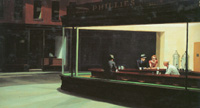
|
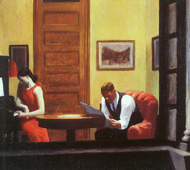
|
| Edward Hopper, Nighthawks. | Edward Hopper, Room in New York City |
|
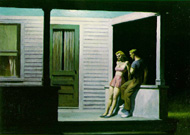
|
|
| Edward Hopper, Summer Evening. |